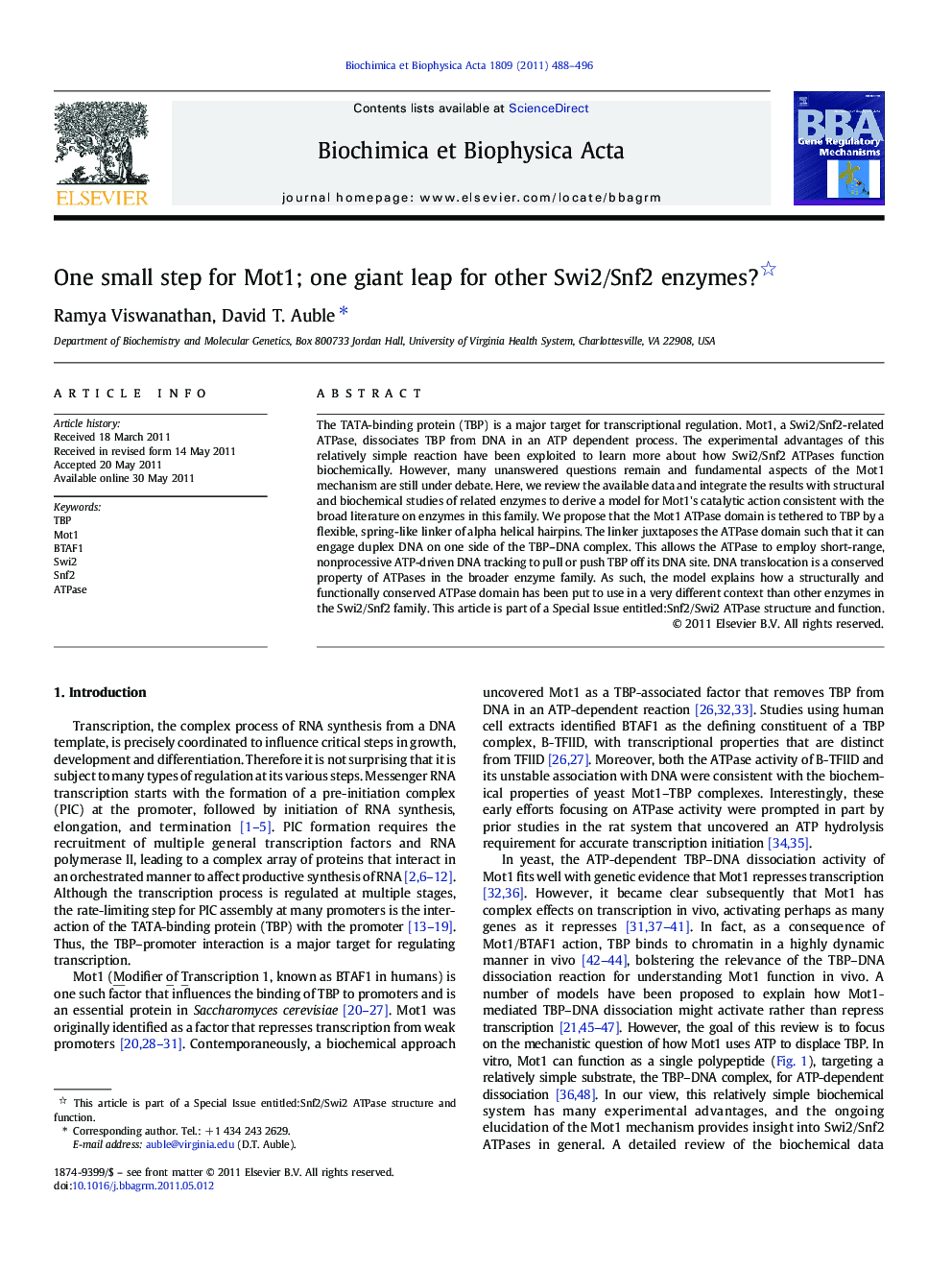| Article ID | Journal | Published Year | Pages | File Type |
|---|---|---|---|---|
| 1946650 | Biochimica et Biophysica Acta (BBA) - Gene Regulatory Mechanisms | 2011 | 9 Pages |
The TATA-binding protein (TBP) is a major target for transcriptional regulation. Mot1, a Swi2/Snf2-related ATPase, dissociates TBP from DNA in an ATP dependent process. The experimental advantages of this relatively simple reaction have been exploited to learn more about how Swi2/Snf2 ATPases function biochemically. However, many unanswered questions remain and fundamental aspects of the Mot1 mechanism are still under debate. Here, we review the available data and integrate the results with structural and biochemical studies of related enzymes to derive a model for Mot1's catalytic action consistent with the broad literature on enzymes in this family. We propose that the Mot1 ATPase domain is tethered to TBP by a flexible, spring-like linker of alpha helical hairpins. The linker juxtaposes the ATPase domain such that it can engage duplex DNA on one side of the TBP–DNA complex. This allows the ATPase to employ short-range, nonprocessive ATP-driven DNA tracking to pull or push TBP off its DNA site. DNA translocation is a conserved property of ATPases in the broader enzyme family. As such, the model explains how a structurally and functionally conserved ATPase domain has been put to use in a very different context than other enzymes in the Swi2/Snf2 family. This article is part of a Special Issue entitled:Snf2/Swi2 ATPase structure and function.
Research highlights► Different models for the Mot1 mechanism are discussed. ► A key aspect of the Mot1 mechanism is proposed to be DNA translocation, driven by an ATP-mediated conformational cycle. ► Rather than functioning as a simple tether, the spring-like nature of the Mot1 N-terminus is proposed to contribute to the catalytic mechanism. ► The Mot1 catalytic mechanism is proposed to be analogous to the initial ATP-driven steps in chromatin remodeling, arguing that mechanistic insights derived from analysis of Mot1 are applicable to other Swi2/Snf2 ATPases.
